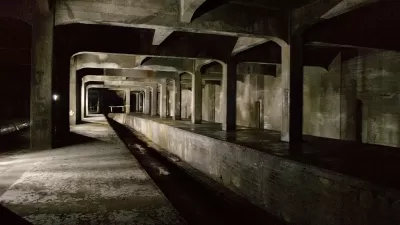Darnell Grisby makes the case for focusing on ridership and boardings (rather than travel time) and clarifying joint development rules to better facilitate transit oriented development and transit oriented communities.
Darnell Chadwick Grisby, director of policy development and research for the American Public Transportation Association and a participant in ULI’s Washington’s Regional Land Use Leadership Institute, introduces the evolving toolkit and demographic realities that will make it easier for developers to build communities oriented to transit.
Grisby's survey of the contemporary realities of transit oriented development includes a discussion of demographic and survey data, funding trends, and the prevalence of metrics for ridership and boardings. On that last point Grisby, describes how those metrics, rather than traditional measure of travel time, will make it easier for developers to deliver TOD:
"The primary federal program that funds mass transit construction, known as New Starts, is shifting its focus says Jeff Boothe, a partner and TOD expert at the Holland & Knight law firm. The new focus is on ridership and boardings rather than travel time, 'meaning how fast we can go from the suburbs to downtown,' he says.
"This is a positive outcome for developers, Boothe says, because projects will more often go 'to the heart of where development is located and planned' rather than 'to a freeway median or freight railway right-of-way.' This means that for a mass transit project to be competitive for federal funds, place making becomes even more important.
"As a result, agency decisions will better facilitate real estate development, Boothe says. 'We will see fewer and fewer projects that choose the path of least resistance, because the feds will incentivize those that work with developers to both impact the built environment and positively impact the local political environment around development.'"
FULL STORY: Regulatory Shift May Help Development Located near Transit

Study: Maui’s Plan to Convert Vacation Rentals to Long-Term Housing Could Cause Nearly $1 Billion Economic Loss
The plan would reduce visitor accommodation by 25,% resulting in 1,900 jobs lost.

North Texas Transit Leaders Tout Benefits of TOD for Growing Region
At a summit focused on transit-oriented development, policymakers discussed how North Texas’ expanded light rail system can serve as a tool for economic growth.

Why Should We Subsidize Public Transportation?
Many public transit agencies face financial stress due to rising costs, declining fare revenue, and declining subsidies. Transit advocates must provide a strong business case for increasing public transit funding.

How to Make US Trains Faster
Changes to boarding platforms and a switch to electric trains could improve U.S. passenger rail service without the added cost of high-speed rail.

Columbia’s Revitalized ‘Loop’ Is a Hub for Local Entrepreneurs
A focus on small businesses is helping a commercial corridor in Columbia, Missouri thrive.

Invasive Insect Threatens Minnesota’s Ash Forests
The Emerald Ash Borer is a rapidly spreading invasive pest threatening Minnesota’s ash trees, and homeowners are encouraged to plant diverse replacement species, avoid moving ash firewood, and monitor for signs of infestation.
Urban Design for Planners 1: Software Tools
This six-course series explores essential urban design concepts using open source software and equips planners with the tools they need to participate fully in the urban design process.
Planning for Universal Design
Learn the tools for implementing Universal Design in planning regulations.
City of Santa Clarita
Ascent Environmental
Institute for Housing and Urban Development Studies (IHS)
City of Grandview
Harvard GSD Executive Education
Toledo-Lucas County Plan Commissions
Salt Lake City
NYU Wagner Graduate School of Public Service





























